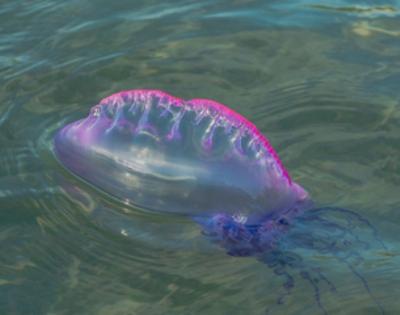“Men-of-war” from Portugal being spotted in New Jersey Shore, people
The deadly Portuguese man-of-war has been seen across the New Jersey coast where more of the seemingly colorful creatures are likely on their way to the beaches even if these exotic marine animals are mostly spotted in tropical regions.
The beachgoers are advised to be on alert as a poisonous species of jelly-fish like creatures have been spotted on New Jersey beach, including in Harvey Cedars on Long Beach Island.
Despite their gelatinous appearance, scientists point out that they are not actually jellyfish.
The potentially lethal marine creatures in question actually belong to jellyfish known as siphonophores.
The northeasterly winds combined with the Gulf Stream are likely helping to push the man-of-wars along the coastline north to New Jersey from the Caribbean or Florida. Beach patrol posted warnings on Facebook stating that it’s safer to swim near a lifeguard and be aware of the surrounding waters while swimming or near the shore. Their poison-laced tentacles are capable of extending anywhere from to 10 to 30 feet, sometimes reaching astonishing lengths measuring as much as 160 feet. It is easy for this venomous creature to blend in with the sand.
Associate biology Professor Dr. Paul Bologna of Montclair State University explained that the sting of the Portuguese Man o’ War can cause the most pain, and for people who suffer from allergic reactions to stings, it can cause them to go into shock. Several times, people have been stung by the creature while walking or by stepping on it, and they know that they are unavoidable.
If you do get stun, officials advise that you head for dry land, remove any tentacles remnants and quickly wash the wound with sea water, not fresh water.
Do not scrub the affected area, the authorities noted. Apply ice to reduce pain and swelling. The pain can be countered with topical treatment of products containing benzocaine or orlidocaine (treatments for sunburn). Contact with the creatures’ tentacles results in an intensely painful sting, blistering and welting warns the National Oceanic and Atmospheric Administration.










